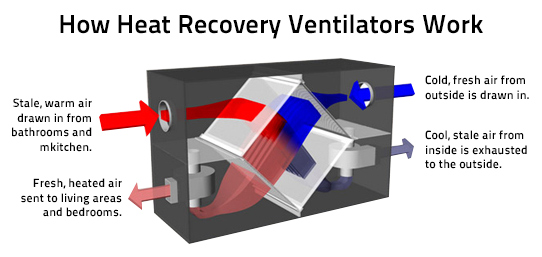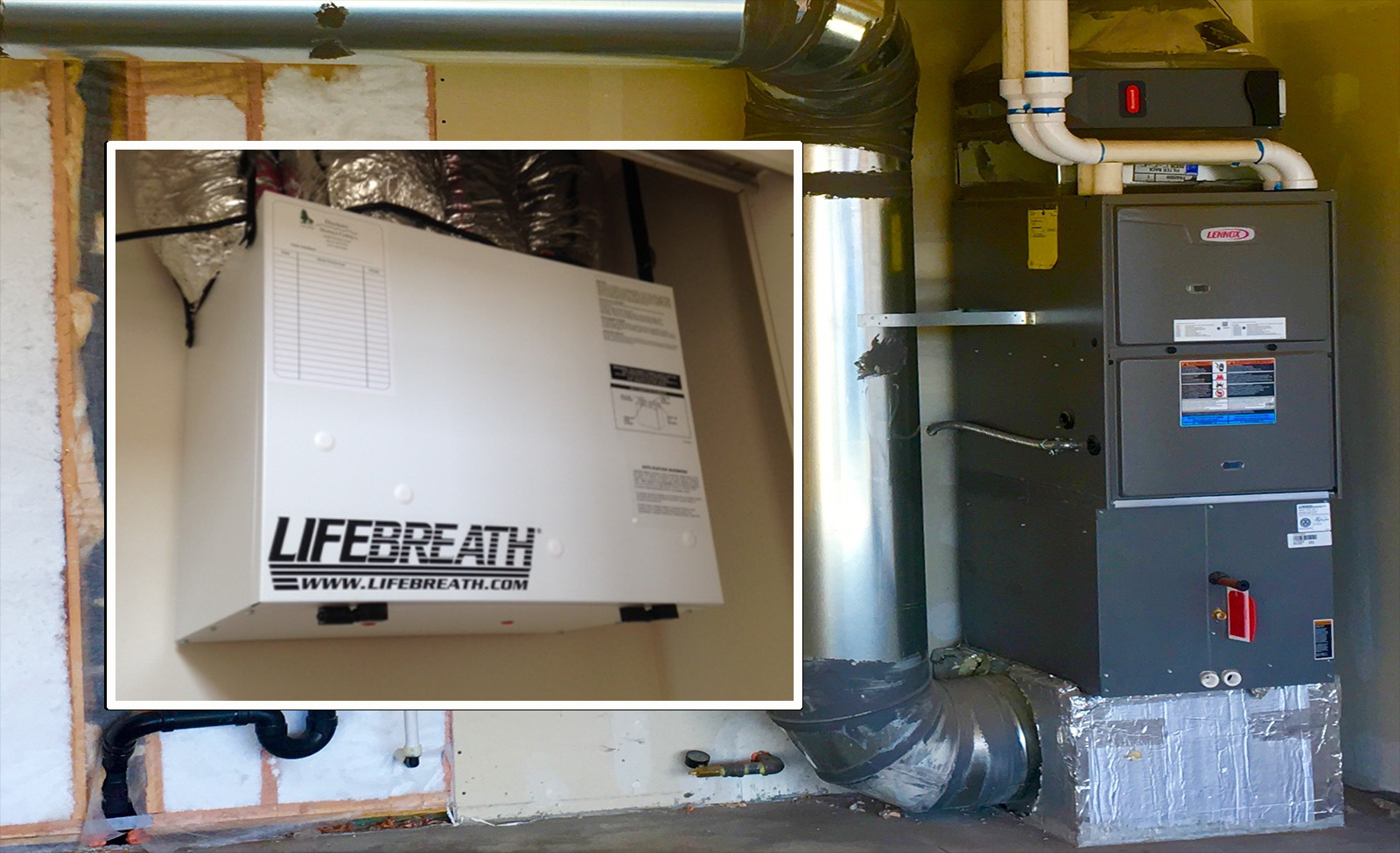Practical Tips to Maximize HRV Performance
Wiki Article
Introducing the Secret Advantages and Uses of Heat Recovery Ventilation in Lasting Style
Heat Recovery Ventilation (HRV) systems play a necessary function in sustainable layout. They assist in a continuous exchange of stagnant indoor air with fresh outdoor air, substantially improving indoor air top quality. In addition, HRVs add to energy performance by reclaiming warmth from exhausted air, which can decrease utility prices. Recognizing the diverse benefits and applications of HRVs reveals their significance in modern-day style. What other advantages do these systems offer in the pursuit of sustainability?Comprehending Heat Recovery Ventilation Systems
Heat recovery ventilation (HRV) systems are designed to enhance interior air high quality while lessening power loss. These systems use a mechanical ventilation strategy to exchange stale indoor air with fresh outside air, guaranteeing a continuous supply of tidy air. By catching warm from the exhaust air, HRVs precondition inbound air, reducing the need on heating and cooling systems. This process not just boosts thermal comfort however additionally contributes to energy effectiveness in domestic and industrial structures. In addition, HRV systems help manage moisture degrees and lower indoor pollutants, promoting a much healthier living setting. Their strategic implementation is vital for attaining lasting design goals, as they supply an equilibrium in between power conservation and resident health.How HRV Systems Job
While several may be familiar with ventilation systems, understanding how heat healing air flow (HRV) systems run is vital for valuing their advantages. HRV systems function by trading stagnant interior air with fresh outdoor air while moving heat in between both streams. This procedure occurs in a heat exchanger, where warm from the outward bound air warms the inbound air throughout chillier months, reducing energy loss. Alternatively, in warmer months, the system can cool inbound air using the cooler outgoing air. HRVs are geared up with followers to promote air movement and filters to eliminate particulates, making certain a continuous, balanced air flow procedure. This cutting-edge design not just boosts power performance however also adds to preserving a comfortable interior environment.Enhancing Indoor Air Top Quality
Indoor air high quality can significantly affect health and wellness and wellness, making reliable air flow necessary in modern homes. Heat Recovery Ventilation (HRV) systems play an important duty in keeping interior air quality by continually exchanging stagnant indoor air with fresh exterior air. This process not just minimizes air-borne toxins but additionally lessens humidity degrees, which can cause mold development and respiratory system problems. HRV systems filter incoming air, removing allergens and particulates, therefore supplying a healthier living setting. Furthermore, these systems assist eliminate odors and unpredictable organic substances (VOCs) generally found in house products. By making certain a consistent circulation of tidy air, HRV systems add to a total better indoor environment, promoting convenience and well-being for residents.Power Effectiveness and Cost Cost Savings
Energy efficiency stands out as a significant advantage of Heat Recovery Ventilation (HRV) systems. By capturing and recycling the warm from tired indoor air, HRVs decrease the power required for home heating incoming fresh air, causing minimized energy usage. This performance equates into reduced utility bills, supplying significant price savings for house owners and organizations alike. In addition, HRV systems usually get energy efficiency incentives and discounts, further improving their financial charm. In time, the initial financial investment in HRV innovation can bring about a desirable return on financial investment with reduced energy expenditures. Consequently, the assimilation of HRV systems not just promotes sustainable layout but likewise provides a sensible option for achieving long-lasting power financial savings and financial advantages.Environmental Advantages of HRV

A wide range of environmental advantages emerges from the implementation of Heat Recovery Ventilation (HRV) systems. By effectively transferring heat from exhaust air to inbound fresh air, HRVs considerably minimize the energy required for heating and cooling rooms. This energy effectiveness translates to lower greenhouse gas exhausts, adding to a decrease in the general carbon footprint of structures. In addition, HRV systems enhance indoor air high quality by continually distributing fresh air, consequently minimizing the concentration of indoor pollutants and allergens. Moreover, the reduction in energy consumption help in conserving natural resources, making HRVs an essential component of sustainable design. Generally, the environmental benefits of HRVs play a crucial role in advertising a much healthier planet and promoting environmentally friendly building techniques.
Versatile Applications in Modern Architecture
Heat recovery ventilation (HRV) systems are increasingly being incorporated into both domestic and industrial building projects. In property setups, HRVs boost interior air quality while making the most of energy efficiency. Meanwhile, in industrial spaces, these systems enhance ventilation techniques, demonstrating their adaptability in modern-day architectural applications.Residential Projects Integration
While contemporary architecture increasingly highlights sustainability, the assimilation of warmth healing air flow systems in domestic projects has actually become a useful solution for enhancing interior air high quality and power effectiveness. These systems efficiently transfer heat from exhaust air to inbound fresh air, lessening energy loss and lowering home heating or cooling demands. In new builds and retrofits alike, warmth recovery ventilation can be seamlessly integrated, giving house owners with a much healthier living setting while decreasing utility costs. In addition, with increasing recognition of environmental influences, more designers and building contractors are identifying the lasting advantages of these systems. Therefore, warmth recuperation ventilation has actually come to be an essential element of lasting household design, showcasing convenience and commitment to environment-friendly methods.Commercial Areas Optimization
As contemporary business rooms evolve to fulfill the needs of sustainability and efficiency, the implementation of heat recovery air flow systems becomes a crucial technique for maximizing interior environments. These systems help with the exchange of stale indoor air with fresh outside air while reclaiming heat, significantly decreasing energy usage. This not only enhances comfort for residents but also aids in lowering functional costs. Functional applications can be observed in offices, retail spaces, and schools, try here where air top quality and temperature control are extremely important. Furthermore, integrating warm recovery air flow lines up with environment-friendly structure accreditations, better promoting environmental responsibility. Eventually, embracing such systems in Read Full Article commercial architecture not only adds to sustainability goals yet also promotes much healthier, a lot more effective rooms for users.
Integrating HRV Into Sustainable Style Practices
Incorporating warmth recuperation air flow (HRV) systems right into lasting style methods offers significant benefits in power efficiency and indoor air quality. By making use of HRV, designers can create affordable options that not just minimize energy consumption but additionally enhance the overall convenience of indoor environments. This positioning with sustainability goals positions HRV as a necessary part in modern-day building methods.
Energy Effectiveness Enhancement
By incorporating heat recovery air flow (HRV) systems right into sustainable design practices, architects and contractors can significantly enhance energy effectiveness in modern constructions. HRV systems work by catching warmth from outbound stagnant air and moving it to incoming fresh air, decreasing the power required for home heating or cooling down indoor spaces. This process not only decreases reliance on traditional a/c systems however additionally decreases overall power usage. Additionally, HRV systems can aid maintain a regular indoor temperature, lowering peak energy demands. By integrating these systems, buildings can attain substantial decreases in utility expenses and carbon footprints, aligning with sustainability goals. Ultimately, HRV technology stands for a functional remedy for enhancing energy performance in the built environment, promoting more liable resource use.Indoor Air Quality Renovation
Just how can warmth recovery ventilation (HRV) systems add to superior interior air top quality in modern structures? HRV systems effectively exchange stale interior air with fresh outside air while recouping warmth energy, minimizing temperature fluctuations. This procedure reduces the focus of interior pollutants, such as unpredictable organic substances (VOCs), irritants, and wetness, which can wear away air top quality and influence resident health. By maintaining optimal moisture degrees and making certain a continual supply of tidy air, HRVs aid develop a much healthier interior atmosphere. On top of that, these systems can be incorporated into sustainable design techniques, advertising power efficiency along with enhanced air high quality. HRV Heat Recovery Ventilation. HRV technology plays an important role in progressing general owner comfort and health in contemporary architectural styles.Affordable Style Solutions

Often Asked Concerns
What Upkeep Is Needed for Heat Recovery Ventilation Equipments?

Upkeep for warm recuperation air flow systems usually involves regular filter substitutes, cleaning of heat exchangers, assessment of followers and ducts, and guaranteeing appropriate drain. These tasks assist maintain performance and lengthen the system's life expectancy with time.
Can HRV Equipments Be Set Up in Existing Buildings?
Heat recovery ventilation systems can undoubtedly be installed in existing structures. HRV Heat Recovery Ventilation. Retrofitting needs careful planning and analysis of the building's layout, ensuring compatibility with existing systems while optimizing energy performance and indoor air top qualityHow Do HRV Systems Effect Sound Degrees Inside Your Home?
HRV systems can affect indoor noise degrees by presenting sound from outside sources via ventilation. Top quality setups usually include sound-dampening functions, reducing sound impact while giving effective air exchange and keeping convenience inside your home.Are There Any Type Of Drawbacks to Using HRV Systems?
The downsides of using HRV systems consist of potential high initial costs, upkeep obstacles, and the possibility of decreased indoor air high quality if filters are not frequently transformed, which can bring about problems with humidity degrees.How Do I Pick the Right HRV System for My Needs?
Choosing the ideal warm healing ventilation system involves evaluating certain demands, such as developing his comment is here size, environment, and power effectiveness objectives. Furthermore, evaluating system features, installment needs, and upkeep factors to consider is vital for peak efficiency and satisfaction.Report this wiki page